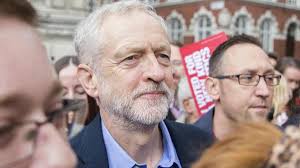
September 29, 2015, by Harry Cocks
Lessons of History for Political Leaders
Successful political leadership has been a key issue in British politics recently, Richard Gaunt writes. Three of the four main political parties in Britain (Labour, the Liberal Democrats and the Scottish Nationalists) have elected new leaders over the course of the past twelve months. Today, the security of tenure of Britain’s political leaders has more to do with successfully winning elections and referendums than anything else. As the Conservative party has shown on more than one occasion, a certain ruthlessness in despatching leaders considered to be electoral liabilities (even in office) is one way of securing and retaining political power.
A new set of books places the leadership of the Conservative, Labour and Liberal parties in historical context. The series has been overseen by academic historians and political scientists and co-ordinated by the former Labour cabinet minister Charles Clarke. The contributors include journalists and public commentators and feature interviews with (amongst others) Tony Blair, Michael Howard and Nick Clegg.
In my two essays for the project, I explore the paradox of Robert Peel’s leadership of the Conservative party (see also Blogs Oct 30th and March 26th 2014). Peel led and, to some extent, established the Conservative party in an era when the idea of organised political parties was beginning to take root. Though Peel has some claims to being one of the most successful Conservative leaders of all time, in terms of the number of seats gained during his tenure, Peel was shaped by his political training in the era before the Great Reform Act of 1832. Thus, while Peel saw the necessity of organised political parties in establishing stable majority governments, in an age when radical reformers and ultra-tories threatened extreme solutions to contemporary problems, once he had secured the premiership in 1841, he expected to be left to govern as he determined. When Peel’s decisions diverged too far from the beliefs of his backbenches – notably over the Maynooth Grant of 1845 and the Repeal of the Corn Laws in 1846 – Peel’s executive mind asserted itself over his party instincts and the Conservatives were split between Free Trade Peelites and Protectionist Conservatives for a generation.
In some respects, William Ewart Gladstone was the inheritor of Peel’s brand of liberal Conservatism. But as my essay on the ‘Grand Old Man’ of British politics, Gladstone’s journey from Peelite Conservatism to Liberalism was never as straightforward as subsequent biographers sometimes claimed. Gladstone was a late and reluctant convert to the Liberal Party (only joining the Reform Club for a short period while he was Prime Minister) and his unwillingness to conciliate backbenchers was noted to be an unfavourable point of comparison with Peel. Yet, whilst Gladstone also ‘split’ his party, over Irish Home Rule in 1886, his ability to gather popular support for his causes beyond Westminster, in mass rallies, speeches and nationwide tours, pioneered a new form of charismatic leadership which helped to sustain his indispensability to the party and keep him at the top of the party until well into his eighties. This may be some consolation to the newly elected leader of the Labour Party.
https://www.bitebackpublishing.com/books/british-conservative-leaders
https://www.bitebackpublishing.com/books/british-liberal-leaders
No comments yet, fill out a comment to be the first

Leave a Reply